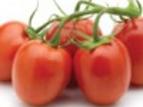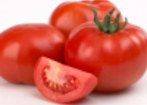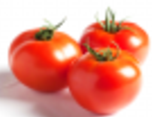Tomato
The word “tomato” may refer to the plant (Solanum lycopersicum) or the edible, typically red, fruit that it bears. Having originated in America, the tomato was spread around the world following the Spanish colonization of the Americas, and its many varieties are now widely grown, often in greenhouses in cooler climates. The tomato is consumed in diverse ways, including raw, as an ingredient in many dishes and sauces, and in drinks. While it is botanically a fruit, it is considered a vegetable for culinary purposes (as well as by the United States Supreme Court, see Nix v. Hedden), which has caused some confusion. The fruit is rich in lycopene, which may have beneficial health effects.
Determinate
 TD153D F1
TD153D F1
Plant: Early
Fruit: Square round, 110-130 GR
Resistance: TMV, V, F2, TSWV
 TD180G F1
TD180G F1
Type: Early for winter and early spring
Plant: Good covering, vigorous
Fruit: 250-300 GR, deep oblate
Resistances: V-1, F-1, F-2,F-3.ToMV,TYLCV
Remarks: Concentrated yield
Indeterminate
 TI138E F1
TI138E F1
Type: Early
Plant: Strong, vigorous
Fruit: 180-200 GR, oblate
Resistances: Ff: 1-5, Fol: 1- 2 ToMV: 0-2, V
Remarks: Very good cold setting
TI158S F1
Type: Early
Plant: Vigorous
Fruit: 180-200 GR, deep globe
Resistances: V, Fol1-2, For, S, ToMV, Ff1-5Remarks: Populair varieties
